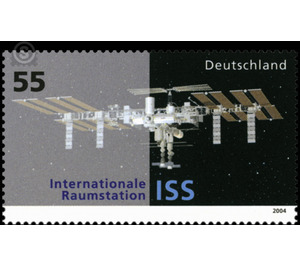International Space Station ISS - Germany / Federal Republic of Germany 2004 - 55 Euro Cent
Theme: Post & Philately
| Country | Germany / Federal Republic of Germany |
| Issue Date | 2004 |
| Face Value | 55.00 |
| Perforation | K 13 3/4 |
| Stamp Type | Postage stamp |
| Item Type | Stamp |
| Chronological Issue Number | 2306 |
| Chronological Chapter | GER-BRD |
| SID | 1674 |
| In 27 Wishlists | |
The ISS (International Space Station) is the largest technology project of all time. It is a joint program of the USA, Russia, Canada, Japan and Europe. Since December 1998, the steadily growing space station orbits the earth every 90 minutes at a distance of 350 to 450 kilometers. Since 2000, changing crews work on the ISS. Your construction should be completed by 2010 at the latest. Overall, the station will weigh about 500 tons and have dimensions of 107 meters wide and 80 meters in length. It will then consist of six laboratory elements, multiple service modules, external platforms, large-scale solar generators and interconnecting grid structures. The contribution of the European countries to the ISS exists above all in the research module »Columbus«. It is being developed and built on behalf of the European Space Association (ESA) in Bremen. Its length will be eight meters, its weight 13 tons. The flying research station offers weightlessness conditions that can not be produced in the laboratory on earth. For gravity influences, for example, the growth of organisms, the properties of materials or the play of forces during friction and lifting operations. The ISS aims to research and test biology, medicine, pharmacology, materials science, geography, meteorology and astronomy. Science hopes to gain insights that will enable new products and processes to be developed on Earth. Everyone benefits from the »technology transfer«. For example, aluminum bodies in vehicle construction today would not be self-evident without material research in weightlessness.


